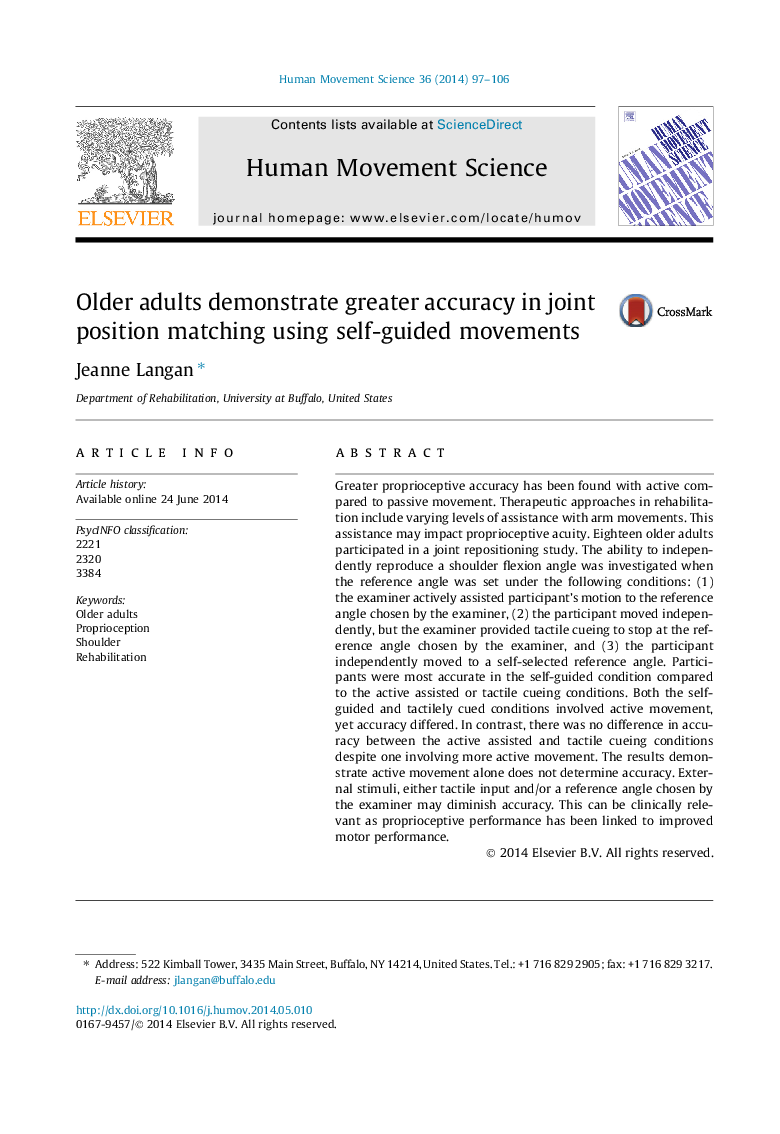| Article ID | Journal | Published Year | Pages | File Type |
|---|---|---|---|---|
| 928326 | Human Movement Science | 2014 | 10 Pages |
Greater proprioceptive accuracy has been found with active compared to passive movement. Therapeutic approaches in rehabilitation include varying levels of assistance with arm movements. This assistance may impact proprioceptive acuity. Eighteen older adults participated in a joint repositioning study. The ability to independently reproduce a shoulder flexion angle was investigated when the reference angle was set under the following conditions: (1) the examiner actively assisted participant’s motion to the reference angle chosen by the examiner, (2) the participant moved independently, but the examiner provided tactile cueing to stop at the reference angle chosen by the examiner, and (3) the participant independently moved to a self-selected reference angle. Participants were most accurate in the self-guided condition compared to the active assisted or tactile cueing conditions. Both the self-guided and tactilely cued conditions involved active movement, yet accuracy differed. In contrast, there was no difference in accuracy between the active assisted and tactile cueing conditions despite one involving more active movement. The results demonstrate active movement alone does not determine accuracy. External stimuli, either tactile input and/or a reference angle chosen by the examiner may diminish accuracy. This can be clinically relevant as proprioceptive performance has been linked to improved motor performance.
